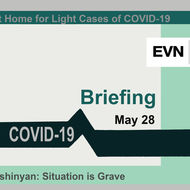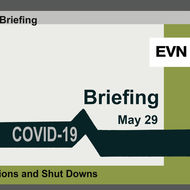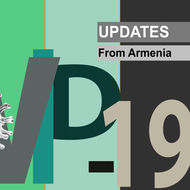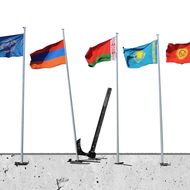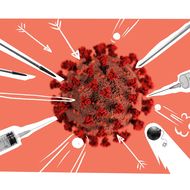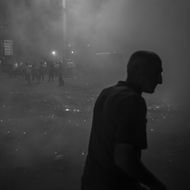Search articles
Search results for
COVID-19 Update (May 28)
Daily deaths hit a new high at 15. During a press briefing this evening, Prime Minister Nikol Pashinyan said the situation is extremely grave and called on people to follow safety regulations as new cases continue to mount.
COVID-19 Update (May 29)
Armenia registers a new one-day record of 460 COVID-19 infections. As the situation continues to deteriorate, per capita figures have surpassed those of Iran and France and are now on par with those of Russia. Prime Minister Pashinyan said that if this pace continues, Armenia will soon reach per capita numbers similar to Italy’s.
COVID-19: Updates From Armenia
EVN Report will be providing regular updates from the Ministry of Health, the World Health Organization and other reliable sources on the situation of COVID-19 in Armenia.
COVID19: The Story Behind the Numbers
By Ani Avetisyan
Economist Ani Avetisyan takes a closer look at the numbers behind the COVID-19 pandemic.
CSTO Failing At Its One Job
By Areg Petrosyan
Armenia will be looking to take advantage of its chairmanship of the CSTO to create a new Crisis Response Center. If its supposed allies continue their indifference even at the organizational stage, they should all be asking themselves why they are together in the first place.
Curbing COVID-19: The World Gets Vaccinated
By Gohar Abrahamyan
COVID-19 vaccines are being administered globally in the hopes of curbing the spread of the virus. Gohar Abrahamyan looks at the international race to develop the vaccine, the different vaccines currently being administered and Armenia’s position.
Current Projects and Plans of Azerbaijan in the Conquered Regions of the Artsakh Republic
By Areg Petrosyan
After its victory in the 2020 Artsakh War, Azerbaijan started massive restoration projects in the seven conquered regions of the Republic of Artsakh. These projects will undoubtedly impact Armenia.
Current Trends in Armenia’s Real Estate Market
By Suren Parsyan
Economist Suren Parsyan writes that due to the pandemic and the post-war situation, Armenia is witnessing a decline in purchasing power, a phenomenon that is having an impact on the real estate market.
Daredevils of Sassoun: A Timeline
An armed police station takeover, three human loses, hundreds detained and many hospitalized... an overview of the main development of last July's Daredevils of Sassoun stand-off and photos by Eric Grigorian.
Dealing With a New Wave of Land Mines
By Lusine Sargsyan
Following the First Karabakh War, landmines and explosive remnants of war became a major hazard for civilians. Today, four regions of Armenia are still contaminated with unexploded ordnance, impacting over 35,000 residents.


